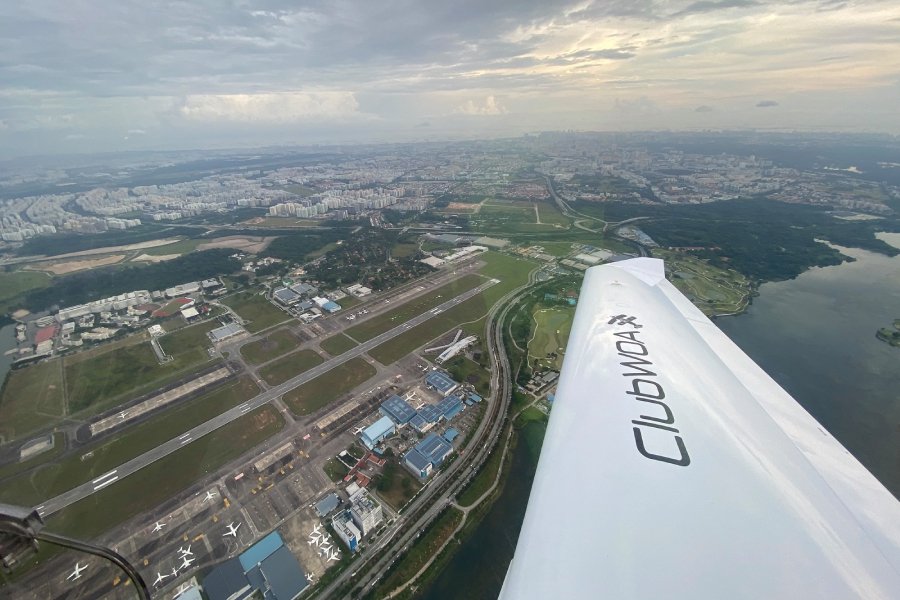Flying is a marvel of modern technology that allows people to travel great distances in a short amount of time. For some, soaring through the clouds is a lifelong dream. Others may regard it as an insurmountable task. However, anyone can learn to fly with the right guidance and instruction. This article will explore what you can expect from an introductory flight lesson, including what you’ll learn and what to expect during your first flight.
Getting Started
Before you begin flying, it’s essential to have a basic understanding of how an airplane works. While you don’t need to be an expert, having a basic knowledge of aerodynamics and the various parts of an aircraft will help you better understand your lessons. You’ll learn about the various controls of the airplane, including the throttle, rudder, and ailerons, and how each one affects the airplane’s movement.
Your first lesson will typically start with a briefing from your instructor. They will explain the fundamentals of flying, including how the airplane stays in the air, turns, and how to read the instruments in the cockpit. Your instructor will also discuss safety procedures and what to do in an emergency.
Once you’ve completed the briefing, you’ll head to the airplane for a pre-flight inspection. This involves checking the various systems of the airplane, including the fuel, oil, brakes, and tires. You’ll also inspect the airplane’s exterior, looking for any signs of damage or wear and tear.
Taking to the Skies
With the pre-flight inspection, it’s time to take to the skies. You’ll climb into the cockpit and put on your headset, allowing you to communicate with your instructor throughout the flight. Before taking off, you’ll go through a checklist to ensure all systems function correctly.
Once you’re ready, your instructor will guide you through the take-off procedure. This involves accelerating down the runway until the airplane reaches a speed where it can lift off the ground. As you become airborne, you’ll feel the sensation of the airplane lifting off the ground and into the sky.
During your first flight, your instructor will take the controls and show you how to maneuver the airplane. You’ll learn how to climb, descend, and turn using the various controls of the airplane. Your instructor will also teach you how to read the instruments in the cockpit and use them to maintain the airplane’s altitude and speed.
As you become more comfortable with the controls, your instructor will gradually let you take over. You’ll practice turning, climbing, and descending and get a feel for how the airplane responds to your inputs. Your instructor will be there to guide you and help you if you need to correct any mistakes.
Once you’ve practiced the various maneuver, it’s time to head back to the airport for landing. Your instructor will guide you through the landing procedure, which involves approaching the runway slowly and touching down gently. Landing can be one of the most challenging parts of flying, but you’ll become more comfortable with practice.
After landing, you’ll taxi back to the hangar and shut down the airplane. Your instructor will debrief you, discussing what went well and what you can improve. They may also give you homework like reading material or practicing maneuver on a flight simulator.
What to Expect?
Flying can be an exhilarating experience, but it can also be daunting, especially for first-time flyers. It’s normal to feel nervous before your first flight, but your instructor will be there to guide you every step of the way. They’ll explain everything you need to know, including what to expect during take-off, in-flight, and landing.
One of the most important things to remember during your first flying lesson is to stay calm and focused. It’s easy to become overwhelmed by the various controls and instruments in the cockpit, but with practice, you’ll become more comfortable. Your instructor will help you stay calm and guide you through each step of the process.
It is also critical to wear comfy apparel and footwear. Flying can be physically demanding, and you’ll want to be comfortable during your lesson. Dress in layers, as the temperature can change rapidly during the flight.
Another thing to consider is the weather. Flying depends heavily on weather conditions; if the weather is unfavorable, your lesson may need to be rescheduled. Your instructor will monitor the weather forecast and let you know if there are any changes.
